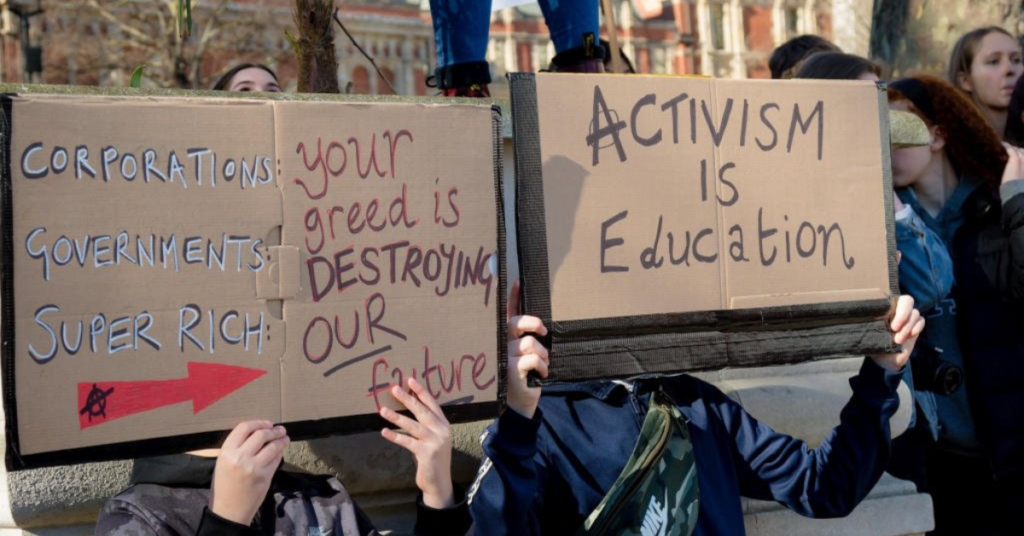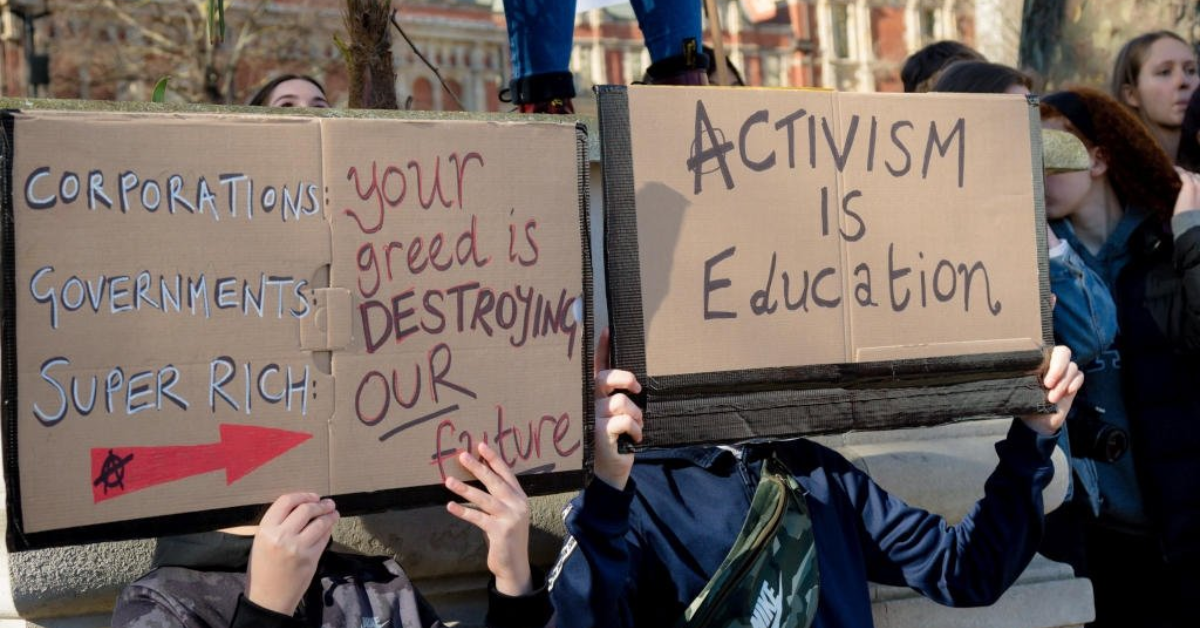As climate change and environmental degradation escalate, student environmental activism has emerged as a crucial force in advocating for sustainability and ecological justice. Young people around the globe are increasingly recognizing their role in shaping the future of the planet, mobilizing their peers and communities to demand meaningful action from governments, corporations, and institutions. This article explores the significance of student environmental activism, its diverse manifestations, and the profound impact it has on society.

The Rise of Student Environmental Activism
The current wave of student environmental activism builds on decades of historical movements that have sought social and environmental justice. The roots of this activism can be traced back to the environmental movement of the 1960s and 1970s, which saw significant milestones like the establishment of Earth Day and the passage of landmark environmental legislation. However, today’s challenges—marked by climate change, loss of biodiversity, and pollution—demand renewed urgency and action.
A Generational Shift
The rise of digital technology has significantly transformed the landscape of activism. Social media platforms allow students to connect, share information, and organize events on a global scale. Movements like Fridays for Future, led by activist Greta Thunberg, have galvanized millions of young people to participate in climate strikes and advocate for urgent action on climate change. This new generation of activists is characterized by its creativity, passion, and commitment to inclusivity and justice.
The Role of Education in Activism
Educational institutions serve as critical incubators for environmental activism. Many universities and colleges are integrating sustainability into their curricula, fostering a culture of environmental awareness and encouraging students to engage in advocacy. This educational foundation equips students with the knowledge and skills needed to tackle complex environmental issues, empowering them to make a difference.
Forms of Student Environmental Activism
Student environmental activism takes on many forms, each reflecting the diverse interests and passions of young advocates. Here are some key methods through which students are making their voices heard:
1. Climate Strikes and Protests
One of the most visible forms of student activism is through climate strikes and protests. These events draw attention to the urgency of climate action, bringing together students to demand accountability from governments and corporations. The global climate strikes, particularly those organized by Fridays for Future, have mobilized millions, demonstrating the power of youth-led movements.
2. Sustainability Initiatives on Campus
Many students focus their efforts on implementing sustainability initiatives within their own educational institutions. This can include advocating for renewable energy sources, establishing recycling and composting programs, and promoting energy conservation efforts. By taking action on campus, students not only reduce their environmental impact but also inspire their peers to adopt sustainable practices.
3. Advocacy for Policy Change
Students are increasingly engaging in advocacy efforts aimed at influencing local, national, and international policy. This can involve organizing letter-writing campaigns, meeting with legislators, and participating in lobbying efforts. By advocating for policies that prioritize environmental protection and sustainability, students work to ensure that their voices are heard in decision-making processes.
4. Digital Activism
In today’s digital age, online activism has become a powerful tool for student engagement. Social media platforms enable students to raise awareness, share resources, and mobilize support for environmental causes. Hashtags such as #ClimateStrike and #FridaysForFuture have become rallying cries for young activists, facilitating global conversations around climate action and sustainability.
5. Collaboration with NGOs and Local Communities
Many students partner with non-governmental organizations (NGOs) and local community groups to amplify their activism efforts. These collaborations can lead to impactful initiatives, such as tree planting, beach cleanups, and educational workshops. By working with established organizations, students gain access to resources and expertise that enhance their activism and broaden their impact.
The Impact of Student Environmental Activism
The influence of student environmental activism is substantial, shaping public discourse and driving action on environmental issues. Here are some key impacts of this movement:
1. Raising Awareness and Educating Peers
Student activists play a vital role in raising awareness about environmental challenges. Through campaigns, protests, and educational outreach, they inform their peers and communities about the importance of sustainability and climate action. This increased awareness fosters a more informed public, encouraging individuals to take responsibility for their environmental impact.
2. Promoting Policy Changes
The collective efforts of student activists have led to significant changes in policy. By mobilizing support and advocating for sustainable practices, students have influenced local and national governments to adopt measures prioritizing environmental protection. This includes commitments to carbon neutrality, renewable energy investments, and stricter regulations on pollution.
3. Inspiring Future Generations
The passion and dedication demonstrated by student activists serve as an inspiration for future generations. By sharing their experiences and successes, they encourage their peers to engage in environmental issues and activism. This generational shift is crucial for building a sustainable movement that can continue to evolve and address emerging challenges.
4. Fostering a Culture of Sustainability
Through their activism, students are helping to cultivate a culture of sustainability within their institutions and communities. By advocating for environmentally friendly practices and policies, they contribute to a societal shift toward prioritizing ecological health and responsibility.
Challenges Faced by Student Activists
Despite their commitment and determination, student activists encounter several challenges in their pursuit of change:
1. Institutional Barriers
Students often face resistance from educational institutions and governmental bodies that may prioritize short-term goals over long-term sustainability. Bureaucratic hurdles can impede the implementation of student-led initiatives and create frustration among young activists.
2. Limited Resources
Many student-led initiatives operate with limited resources, relying on volunteer efforts and grassroots support. This lack of funding and infrastructure can hinder their ability to execute larger projects or reach broader audiences.
3. Climate Anxiety and Burnout
The magnitude of the climate crisis can lead to feelings of anxiety and hopelessness among student activists. The pressure to make significant change can result in burnout, affecting their mental health and motivation to continue advocating for environmental issues.
Conclusion
Student environmental activism is a crucial force for change in addressing the pressing challenges of our time. As young people increasingly recognize the urgency of environmental issues, their collective efforts are shaping a more sustainable future. By advocating for change, raising awareness, and fostering a culture of sustainability, students are not only addressing current challenges but also laying the groundwork for a resilient and equitable world.
The future of our planet rests in the hands of the next generation, and student environmental activism is proving that young voices can drive the necessary change for a sustainable future. As we continue to witness this remarkable movement unfold, it is clear that the passion and determination of students will be instrumental in shaping a better world for generations to come. In an era marked by environmental uncertainty, student activism stands as a beacon of hope, showing that when young people unite for a common cause, they can achieve remarkable progress toward a sustainable planet.
